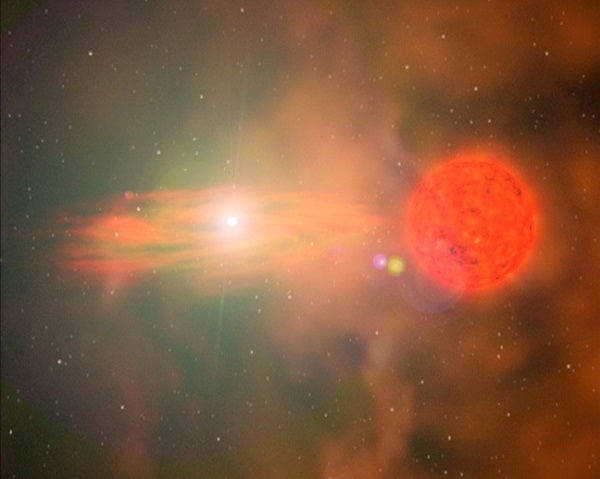A type Ia supernova explosion occurs when the white dwarf pulls enough material from its companion star to reach 1.4 solar masses. A likely mechanism is a small thermonuclear flame near the center that propagates so fast that the entire white dwarf incinerates before it can expand and cool. So far there is no clear consensus on how a type Ia (or nova) explodes. A type Ia explosion easily can burn more than half of the white dwarf into iron, so next time you fry something in an iron pot, a good chunk may have synthesized in such explosions over billions of years. Another oddity is that while most of the energy is released in a few seconds, the peak brightness occurs three weeks later!
This delay is because the ejected material is so dense after the explosion that photons can barely escape. Over time, the rapidly advancing ejected material moving at about 22 million mph (10,000 km/s) becomes less dense and more photons escape, resulting in an observable “rise time.” Finally, note that “core collapse” supernovae, the natural evolutionary end for large stars, are much more common than type Ia, but the type Ia are spectacularly bright and seen over much larger distances.
University of Chicago










